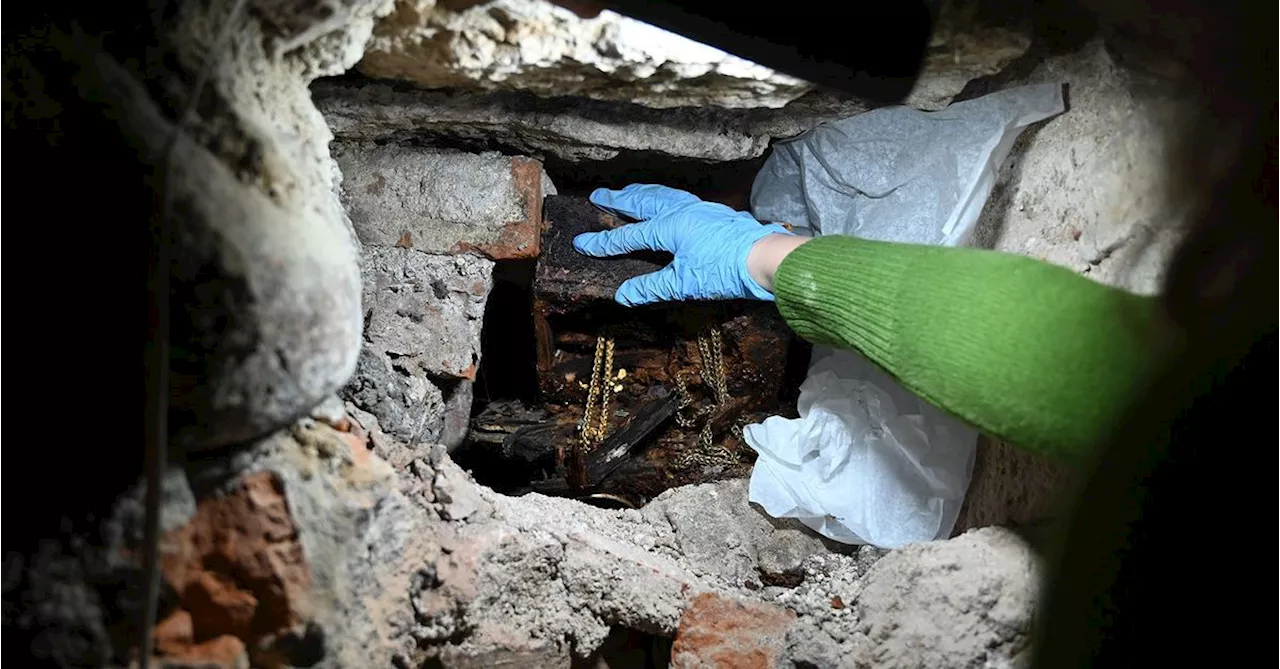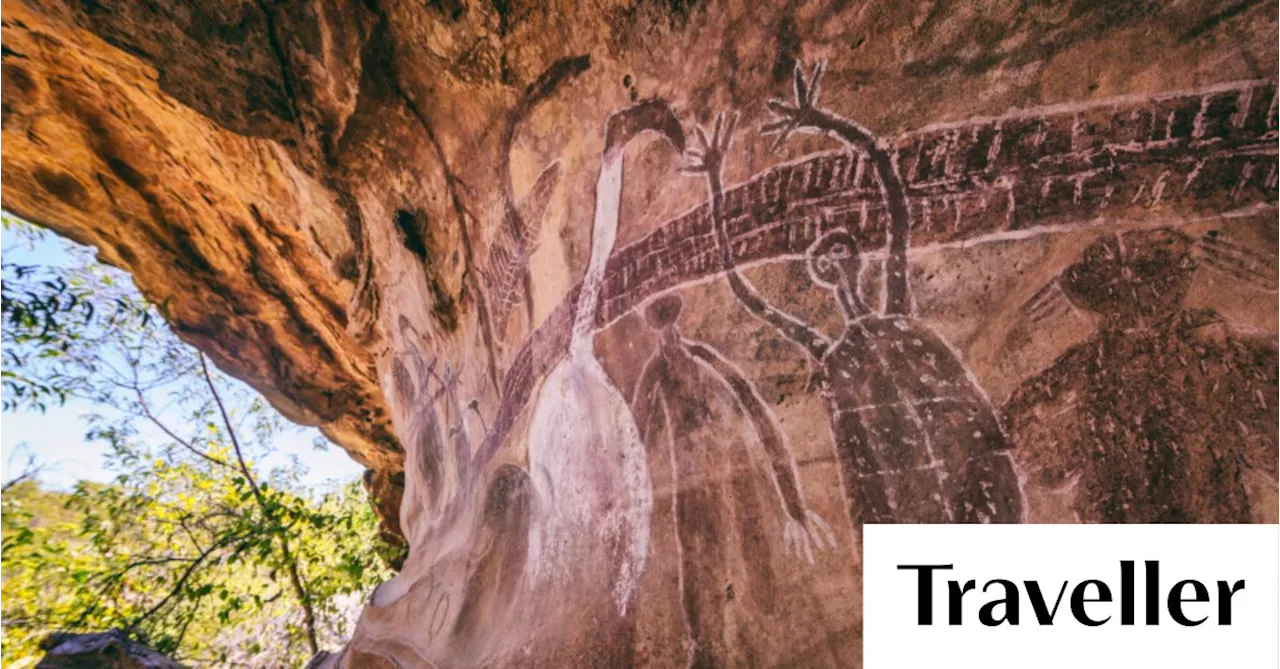This article explores the lesser-known but equally significant objects that tell the story of Australia. From a World War I lifeboat to a Chinese dragon and a Bundjalung shield, these objects offer unique insights into Australia's past, culture, and identity.
Travel is often about seeing things, and those things are often outsized. In Australia, we want to know if someone has seen Uluru or the Sydney Opera House or the Flinders Ranges.
But what about more modestly sized objects that might equally capture the essence of Australia and the aspirations and entertainments of its people? What are the things that encapsulate our pop culture or our sporting and scientific achievements? What objects make our history tangible, or are emblematic of events that created our national spirit? The list is enormous. You might think of anything from a Hills Hoist to the Tomb of the Unknown Australian Soldier, a vintage Aeroplane Jelly packet to the first Holden car. Thinking small can be rewarding. Next time you travel in Australia, draw up a list of significant objects you want to see on top of significant landscapes or towns. Here’s a brief bucket list to get you going, but you’ll no doubt question some choices and want to add others. A steel lifeboat from HMT Ascot, painted white with wooden trimmings and simple wooden plank seats. It disembarked troops of the 13th Australian Infantry Battalion under enemy fire in World War I.The Gallipoli campaign of 1915 was a disaster but looms large in the Australian imagination as a creator of its national identity and ANZAC spirit. This fragile craft, punctured with bullet holes, is a reminder of the awful reality behind the grand myths. It’s part of one of the world’s most significant World War I collections, with other moving items including the letters and diaries of Gallipoli soldiers.The lifeboat is in the First World War Gallery at the Australian War Memorial in Canberra. Open 10am-4pm daily. Admission free, but a timed ticket booked online is required, or on arrival if available. Hand-embroidered and painted dragons made from thousands of mirrored scales and satin cloth over bamboo wickerwork frames. They require many people to operate during cultural and religious events.The Chinese were the largest non-British immigrant group in Australia during the 1850s gold rush, and their presence influenced the subsequent White Australia Policy and our relationship with Asia. These three magnificent dragons – one the oldest in the world, another the longest – are a defining symbol of the endurance and success of our immigrant groups. They’re surrounded by an abundance of Chinese objects, from imperial robes to teapots.The dragons are displayed in the Golden Dragon Museum in Bendigo, Victoria. The newest (Dai Gum Loong) makes parade sorties at Easter. Open 9.30am-5pm daily, closed Mondays outside school holiday periods, admission $16, children $10. A sturdy shield in the shape of an elongated oval from the Bundjalung people of the northern NSW coast. Its age is unknown but its provenance dates to 1925. It has beautiful patches of bark-brown colour and mottling.Any number of Indigenous objects should be admired for their artistry, ingenuity and function. So why a shield? Well, it invites us to reconsider the narrative of passive Indigenous culture and unopposed European settlement. Shields anywhere are a symbol of power and identity, and Aboriginal shields are a reminder of the invasion that continues to affect Indigenous Australians today. Other items on display include spears, hunting clubs, bowls, fish hooks and bark paintings.The shield is on display on Level 1 of the Chau Chak Wing Museum at the University of Sydney. Open 10am-5pm Monday-Friday, 12pm-4pm Saturday-Sunday, free admission. One of the world’s most accurate replica vessels, built in Australia and fully operational. Endeavour was the British Navy research vessel that sailed a 1768-71 world voyage under James Cook, during which he “discovered” Australia’s east coast.You’ll be gobsmacked at the cramped size of this 30-metre ship that carried 94 men in often grim conditions, although everything looks new, so you get no impression of the dirt and stench. The detail is impressive, from the 30 kilometres of rigging and 28 sails to the clutter in the Great Cabin where Cook and botanist Joseph Banks worked.The ship is docked at the Australian National Maritime Museum in Darling Harbour in Sydney, unless sailing for special events. Open daily 10am-4pm, 9.30am-5pm during school holidays, admission $25, children $15. The flag that fluttered over rebellious gold miners in 1854. The ragged, outsized flag depicts a yellowed cross studded with Southern Cross stars against a Prussian blue background.The Eureka Rebellion, an uprising of miners against Victoria’s colonial government, is generally seen as a political revolt and one of the founding moments of Australian democracy and notions of a fair go. Similar flags continue to be used by trade unions, protesters and the far-right. The original has several patches and ragged edges, and much of the lower-right corner is missing, yet it is impressive in its tattered defiance
AUSTRALIAN CULTURE HISTORY MUSEUMS OBJECTS TRAVEL ANZAC DAY IMMIGRATION EUREKA REBELLION ABORIGINAL CULTURE
Australia Latest News, Australia Headlines
Similar News:You can also read news stories similar to this one that we have collected from other news sources.
 From Tennis Ballkid to Cricket Star: Alana King's Rise to Ashes GloryAlana King's journey from tennis ballkid to Ashes-winning leg-spinner for Australia.
From Tennis Ballkid to Cricket Star: Alana King's Rise to Ashes GloryAlana King's journey from tennis ballkid to Ashes-winning leg-spinner for Australia.
Read more »
 Western Australia Wins Bid for Australia's First Green Iron PlantWestern Australia has secured Australia's first green iron plant, beating out competition from New South Wales and South Australia. The $75 million investment will see an Electric Smelting Furnace (ESF) built in Kwinana, utilizing Pilbara ore to produce green iron, the key ingredient in zero-emissions steel.
Western Australia Wins Bid for Australia's First Green Iron PlantWestern Australia has secured Australia's first green iron plant, beating out competition from New South Wales and South Australia. The $75 million investment will see an Electric Smelting Furnace (ESF) built in Kwinana, utilizing Pilbara ore to produce green iron, the key ingredient in zero-emissions steel.
Read more »
 Australia vs India live: Australia needs 162 runs for Test win, Jasprit Bumrah fitness in questionSteve Smith is out for 4, one run short of the famous 10,000-run milestone, as Australia is reduced to 3-58 in a chase of 162 to win the fifth Test and regain the Border-Gavaskar Trophy. Follow live.
Australia vs India live: Australia needs 162 runs for Test win, Jasprit Bumrah fitness in questionSteve Smith is out for 4, one run short of the famous 10,000-run milestone, as Australia is reduced to 3-58 in a chase of 162 to win the fifth Test and regain the Border-Gavaskar Trophy. Follow live.
Read more »
 My Cluttered Desk: A Journalist's TreasuresA journalist reflects on his messy desk and the stories behind the seemingly random objects he keeps there.
My Cluttered Desk: A Journalist's TreasuresA journalist reflects on his messy desk and the stories behind the seemingly random objects he keeps there.
Read more »
 A Journalist's Desk: Treasures and TrashA journalist recounts the story of his cluttered desk, filled with years of accumulated notes, papers, and personal items. He explains why he holds onto everything, even the things he doesn't like, and highlights his most prized possessions - an Oxford English Dictionary and a Roget's Thesaurus.
A Journalist's Desk: Treasures and TrashA journalist recounts the story of his cluttered desk, filled with years of accumulated notes, papers, and personal items. He explains why he holds onto everything, even the things he doesn't like, and highlights his most prized possessions - an Oxford English Dictionary and a Roget's Thesaurus.
Read more »
 Royal treasures hidden since World War II recovered from cathedralHistorical treasures hidden for decades have been uncovered in the crypts of a cathedral, with items including burial crowns and insignia belonging to Medieval European rulers.
Royal treasures hidden since World War II recovered from cathedralHistorical treasures hidden for decades have been uncovered in the crypts of a cathedral, with items including burial crowns and insignia belonging to Medieval European rulers.
Read more »
